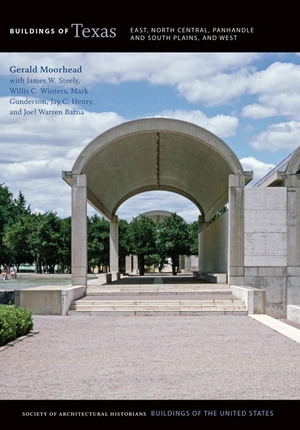
Stone buildings were originally planned around the central parade ground, but picket, log, and frame structures were built instead, often with tent roofs. Only stone foundations and chimneys remain today. About ninety structures were built from the elm and sycamore that grew along the Brazos River banks, and the wood was dressed using a portable sawmill. In 1935, Shackelford County acquired the fort site and donated it to the State of Texas for a park. In 1939–1940 Civilian Conservation Corps (CCC) Company 3803 built campgrounds, roads, and culverts. The Texas Historical Commission assumed responsibility for the historic site in 2009. A portion of the Official State of Texas Longhorn Herd now grazes on the site. A visitor center (2014, Cotera+Reed Architects) consists of two limestone-clad enclosures joined by a dramatically cantilevered canopy, spatially evoking both the dogtrot buildings and porches of historic vernacular architecture.

